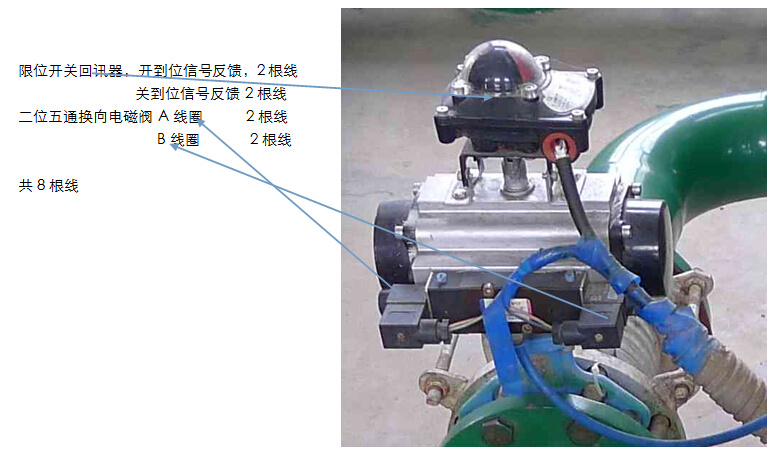Working Principle of a Double-Acting Pneumatic Butterfly Valve with Dual-Coil Solenoid Valves
2015-04-14
The working principle of a double-acting pneumatic valve equipped with a 5/2-way, dual-coil solenoid valve: The dual-electrically controlled solenoid valve manages the opening and closing of the valve by energizing or de-energizing its two electromagnetic coils. When one coil is de-energized while the other remains energized, the valve spool stays in its current position—this feature is known as a "memory function" valve.

1 Hole: Air inlet, 5 kg
2 Ports: Connected to Pneumatic Valve 2 Ports
4 Ports: Connected to Pneumatic Valve 4 Ports
3-hole, 5-hole: corresponds to 2-hole, 4-hole venting
When the solenoid valve's coil A is energized, air enters through port 2 and exhausts from port 4. This causes the pneumatic valve actuator to rotate counterclockwise, opening the valve. If coil A is de-energized while coil B remains unpowered, the pneumatic valve stays in its current position. Notably, coil A only needs to be energized once—just enough to open the valve—making it highly energy-efficient.
When the solenoid valve B coil is energized, air enters through port 4 and exits through port 2, causing the pneumatic valve actuator to rotate clockwise, thereby closing the valve.
When coil B is de-energized and coil A remains unpowered, the pneumatic valve stays in its current position. Coil B only needs to be energized once—just long enough to close the valve—resulting in low power consumption.
If coils A and B are energized simultaneously, the valve remains stationary and does not actuate.

Related News
SAF Coolest v1.3 设置面板 GAGSE-ZGYF-JASDE-SSD
无数据提示
Sorry, there is currently no content in this section.!
You can view other sections or return toHome Page

